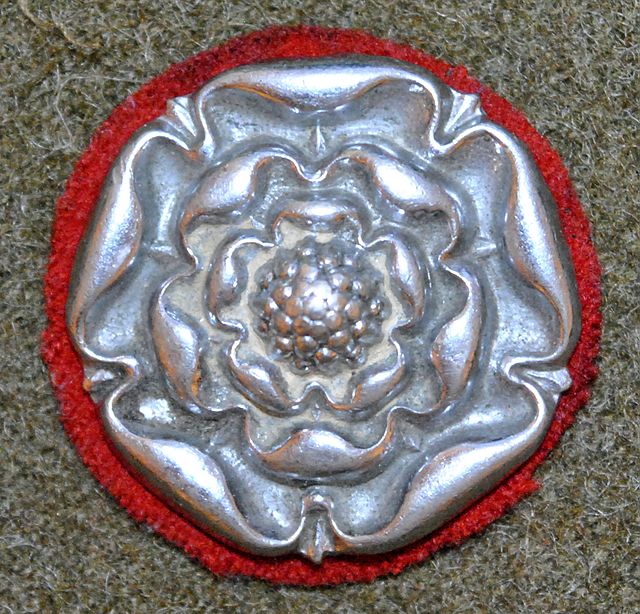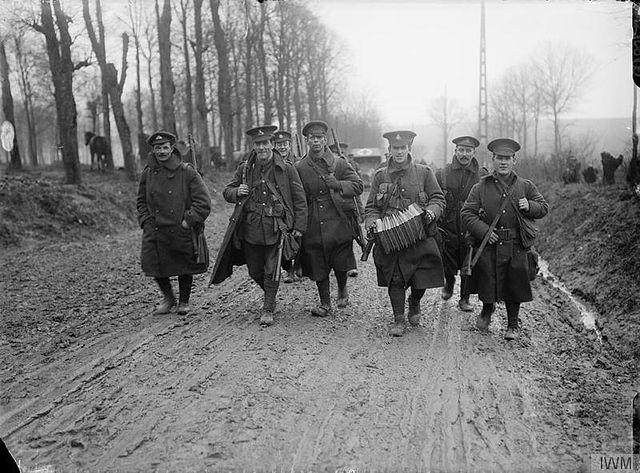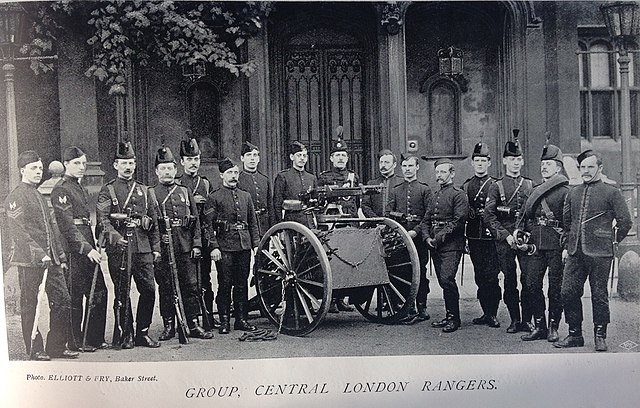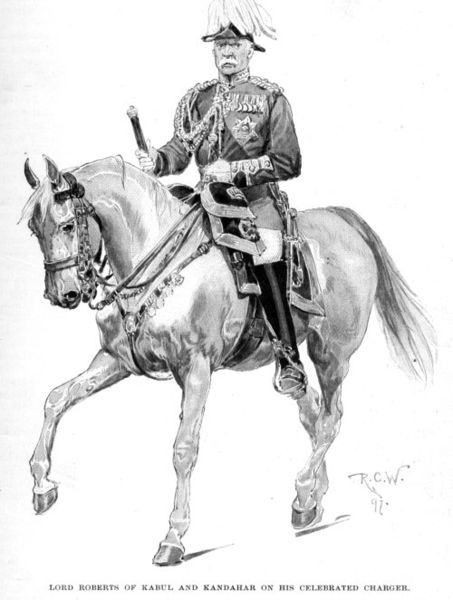49th (West Riding) Infantry Division
The 49th Infantry Division was an infantry division of the British Army. The division fought in the First World War in the trenches of the Western Front, in the fields of France and Flanders. During the Second World War, the division fought in the Norwegian Campaign and in North-western Europe. After the Second World War, it was disbanded in 1946, then reformed in 1947. It remained with Northern Command until finally disbanded in 1967.
Badge worn at the top of the sleeve between the wars and early in the Second World War, made of white metal.
Badge, second pattern, adopted in Iceland during the Second World War.
British troops returning from leave, Mailly Maillet, November 1916. The group of soldiers includes men of the Lancashire Fusiliers, York and Lancaster Regiment, and the Duke of Wellington's Regiment (West Riding), from the 49th Division.
Some members of the 1/6th Battalion, Duke of Wellington's Regiment testing gas equipment on board the Polish liner MS Sobieski, April 1940. She was lying off Gourock, Scotland and had been used as a troopship for some months.
The Territorial Force was a part-time volunteer component of the British Army, created in 1908 to augment British land forces without resorting to conscription. The new organisation consolidated the 19th-century Volunteer Force and yeomanry into a unified auxiliary, commanded by the War Office and administered by local county territorial associations. The Territorial Force was designed to reinforce the regular army in expeditionary operations abroad, but because of political opposition it was assigned to home defence. Members were liable for service anywhere in the UK and could not be compelled to serve overseas. In the first two months of the First World War, territorials volunteered for foreign service in significant numbers, allowing territorial units to be deployed abroad. They saw their first action on the Western Front during the initial German offensive of 1914, and the force filled the gap between the near destruction of the regular army that year and the arrival of the New Army in 1915. Territorial units were deployed to Gallipoli in 1915 and, following the failure of that campaign, provided the bulk of the British contribution to allied forces in the Sinai and Palestine Campaign. By the war's end, the Territorial Force had fielded twenty-three infantry divisions and two mounted divisions on foreign soil. It was demobilised after the war and reconstituted in 1921 as the Territorial Army.
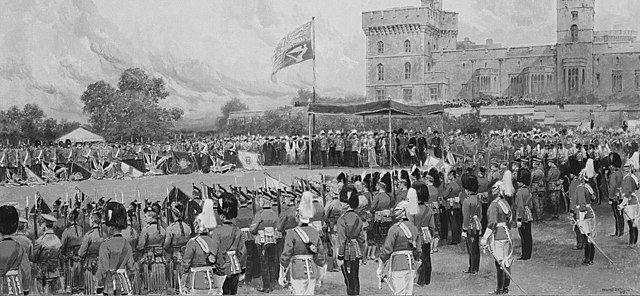
Presentation of colours and guidons to 108 units of the Territorial Force by King Edward VII at Windsor Palace, 19 June 1909
Late 19th-century volunteers of the 22nd Middlesex Rifle Volunteers (Central London Rangers)
Richard Haldane, architect of the Territorial Force
Lord Roberts, fierce critic of the Territorial Force and strong proponent of conscription as a better alternative

